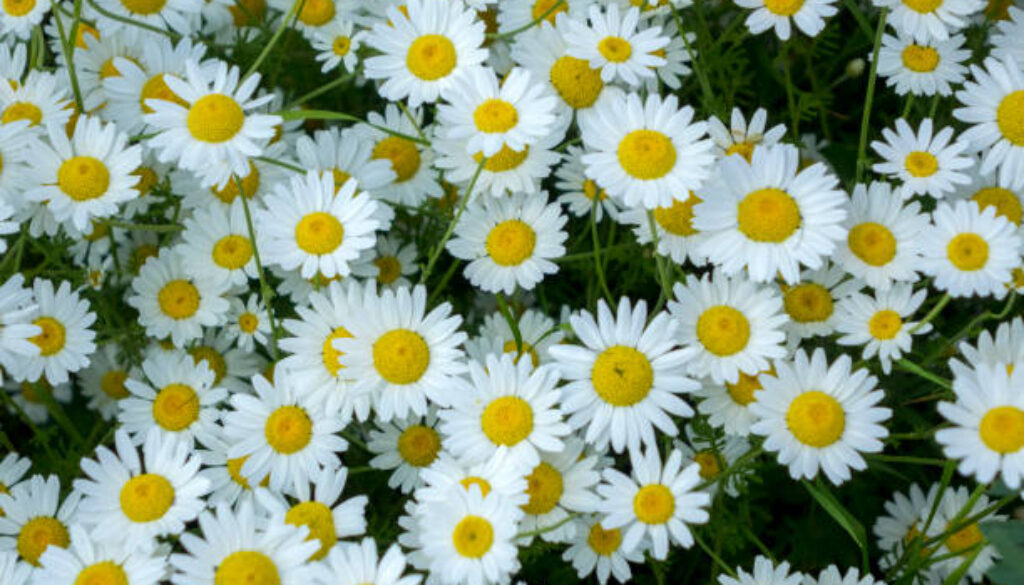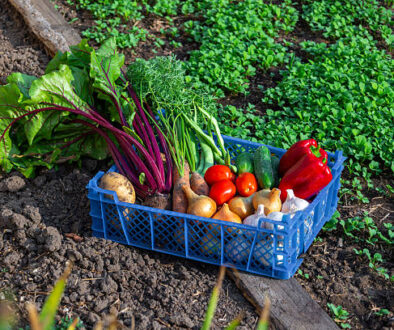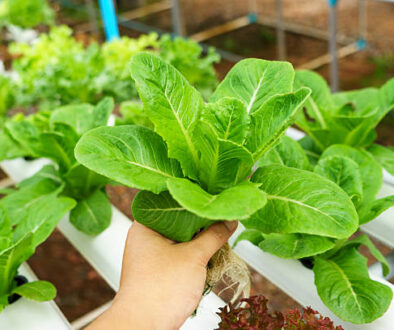Chamomile: The Natural Antibiotic
This post may contain paid and/or affiliate links. I may earn a small commission at no extra cost to you.
If you’ve been thinking about adding more purpose to your backyard, growing chamomile might be the perfect start.
This gentle plant is often called a natural antibiotic, and it’s one of those medicinal plants you’ll actually use day by day.
You and I both want easy, natural ways to stay healthy, right?
A cup of chamomile tea can calm nerves, soothe stomach aches, and even help fight infections.
Planting it at home means you’re building your own herbal medicine garden or even a small healing herbs garden.
With chamomile, your medicinal herbs garden becomes more than pretty; it becomes part of your daily wellness.
Why Chamomile Is Called Nature’s Antibiotic
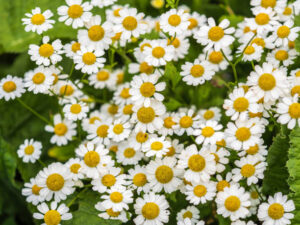
Chamomile isn’t just a pretty flower; it’s been trusted for centuries as one of the most effective healing plants.
People have used it to treat everything from cuts and burns to colds and stomach troubles.
The reason it’s often called a natural antibiotic is that it has compounds with strong antibacterial and anti-inflammatory properties.
That means it can help your body fight infections naturally, without you needing to reach for medicine right away.
When you grow chamomile at home, you’re not just planting flowers.
You’re adding a natural healer to your space, one that will keep giving back in many ways.
Related:
- 15 Must-Have Herbs for Your Medical Garden and How to Grow Them Very Quickly And Effectively
- How to Start a Medical Garden at Home for Natural Healing (Step-by-Step) Guide For Beginners
- The Main Benefits of Having a Medicine Garden in Your Backyard
The Benefits of Growing Chamomile
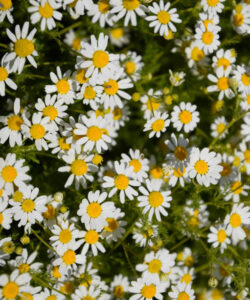
Before we talk about how to grow it, let’s look at why chamomile deserves a spot in your garden.
- Supports digestion – A simple cup of chamomile tea can ease stomach aches, bloating, or indigestion.
- Promotes better sleep – If you’ve had a stressful day, chamomile tea before bed is one of the best natural sleep aids.
- Boosts immunity – Because of its antibacterial nature, it helps your body stay strong against common illnesses.
- Soothes skin – Chamomile can be made into a wash or balm to calm rashes, burns, or irritated skin.
- Relieves stress – Just the smell of chamomile growing in your garden has a calming effect.
It’s rare to find a single plant that can do so much for your health.
That’s why it’s often one of the first choices for a medicinal herbs garden.
The Best Place to Grow Chamomile
Chamomile is easygoing, but like any plant, it thrives best under certain conditions.
- Sunlight: Full sun is perfect, but chamomile also does well in partial shade, especially if you live in a hot climate.
- Soil: It prefers light, well-drained soil. Sandy or loamy soil works best, but the plant adapts as long as water doesn’t pool around it.
- Space: Chamomile doesn’t need much room. You can plant it in garden beds, pots, or even alongside vegetables as part of garden companion planting.
Think of chamomile as a friendly guest in your garden—it doesn’t demand much but adds a lot of value.
How to Plant Chamomile
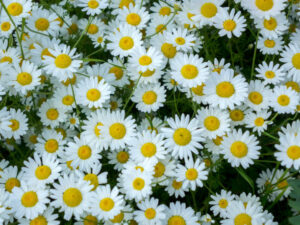
Starting chamomile at home is simple, and you can do it in two main ways: from seeds or seedlings.
Planting from Seeds
- Sow the seeds in early spring once the soil has warmed.
- Scatter them lightly over the soil, then gently press them in. Don’t bury them deeply; chamomile seeds need light to germinate.
- Keep the soil moist but not soggy until sprouts appear in about one to two weeks.
Using Seedlings
If you want a quicker start, buy chamomile seedlings from a local nursery. Plant them about 8–10 inches apart in rows or clusters.
No matter how you start, chamomile grows quickly and will soon fill your space with soft, daisy-like flowers.
Taking Care of Chamomile
Chamomile is not demanding. Once it’s growing, it doesn’t take much to keep it healthy.
- Watering: Keep the soil slightly moist, especially when the plants are young. Once mature, chamomile can handle short dry spells.
- Pruning: Trim flowers regularly to encourage more blooms.
- Pests: Chamomile naturally repels some pests, which makes it a helpful partner in a healing herbs garden. It can protect nearby vegetables from harmful insects.
- Harvesting: Pick the flowers when they’re fully open. Dry them in a shaded, airy spot and store them in glass jars to use for tea or remedies later.
Chamomile truly rewards you for a little care with a lot of healing power.
Ways to Use Chamomile
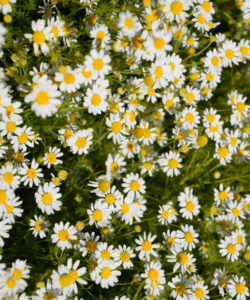
The best part about growing chamomile is how many ways you can use it at home.
- Tea: The most common use. Steep dried flowers in hot water for 5–10 minutes.
- Skin rinse: Cool chamomile tea makes a gentle wash for irritated skin or minor cuts.
- Steam: Add chamomile flowers to boiling water, cover your head with a towel, and breathe in the steam to ease colds or congestion.
- Homemade balms: Infuse chamomile in oil and mix it with beeswax for a soothing skin balm.
Every time you harvest from your garden, you’re creating your own natural remedies.
Chamomile as a Companion Plant
One thing you’ll love about chamomile is how well it works with other plants.
It’s often used in garden companion planting because it improves the health of its neighbors.
For example, planting chamomile near cabbage, onions, or mint can make those plants stronger and more productive.
Chamomile also attracts pollinators like bees and butterflies, which helps your whole garden thrive.
It’s like having a gentle helper that works quietly in the background.
Common Mistakes to Avoid
Even though chamomile is simple to grow, there are a few mistakes people make:
- Overwatering – Too much water can cause root rot. Always let the soil dry slightly between waterings.
- Planting too deep – Remember, chamomile seeds need light to sprout. Don’t bury them.
- Neglecting harvest – If you don’t pick the flowers, the plant stops producing. Regular harvesting keeps it blooming.
- Too much shade – While it tolerates shade, too little sun will weaken the plant and reduce flowers.
Keeping these in mind ensures your chamomile will grow strong and full of flowers.
Why Chamomile Belongs in Every Home Garden
If you’ve been thinking about creating a small herbal medicine garden, chamomile is the perfect plant to start with.
It’s useful, beautiful, and easy to grow. Whether you want it for tea, skin care, or natural remedies, it gives you countless benefits with very little effort.
By growing chamomile at home, you’re not just planting flowers—you’re building your own supply of natural healing.
Imagine stepping outside, picking a few fresh flowers, and brewing a tea that helps you relax, fight colds, or calm your stomach.
That’s the power of adding chamomile to your daily life.
Conclusion
Chamomile is more than just a soothing tea—it’s a natural antibiotic, a garden companion, and one of the most valuable healing plants you can grow at home.
With a little sunlight, care, and regular harvesting, you’ll have an endless supply of natural remedies right at your doorstep.
Whether you’re building a full medicinal herbs garden or just adding one useful plant to your backyard, chamomile will make a lasting difference in your health and wellness.
FAQs
- Can chamomile really replace antibiotics?
Chamomile can help fight bacteria and reduce infections, but it shouldn’t fully replace prescribed antibiotics for serious conditions. It’s best used as a natural support for minor issues. - How long does it take chamomile to grow?
From seed to harvest, chamomile usually takes about 8–10 weeks. You can start enjoying flowers and making tea in just a couple of months. - Can I grow chamomile indoors?
Yes, chamomile grows well in pots by a sunny window. Just make sure the pot has good drainage and the plant gets at least 4–6 hours of sunlight a day. - What’s the best way to store dried chamomile flowers?
Keep them in an airtight glass jar, away from sunlight and moisture. Stored properly, dried chamomile lasts up to a year while keeping its healing properties.
